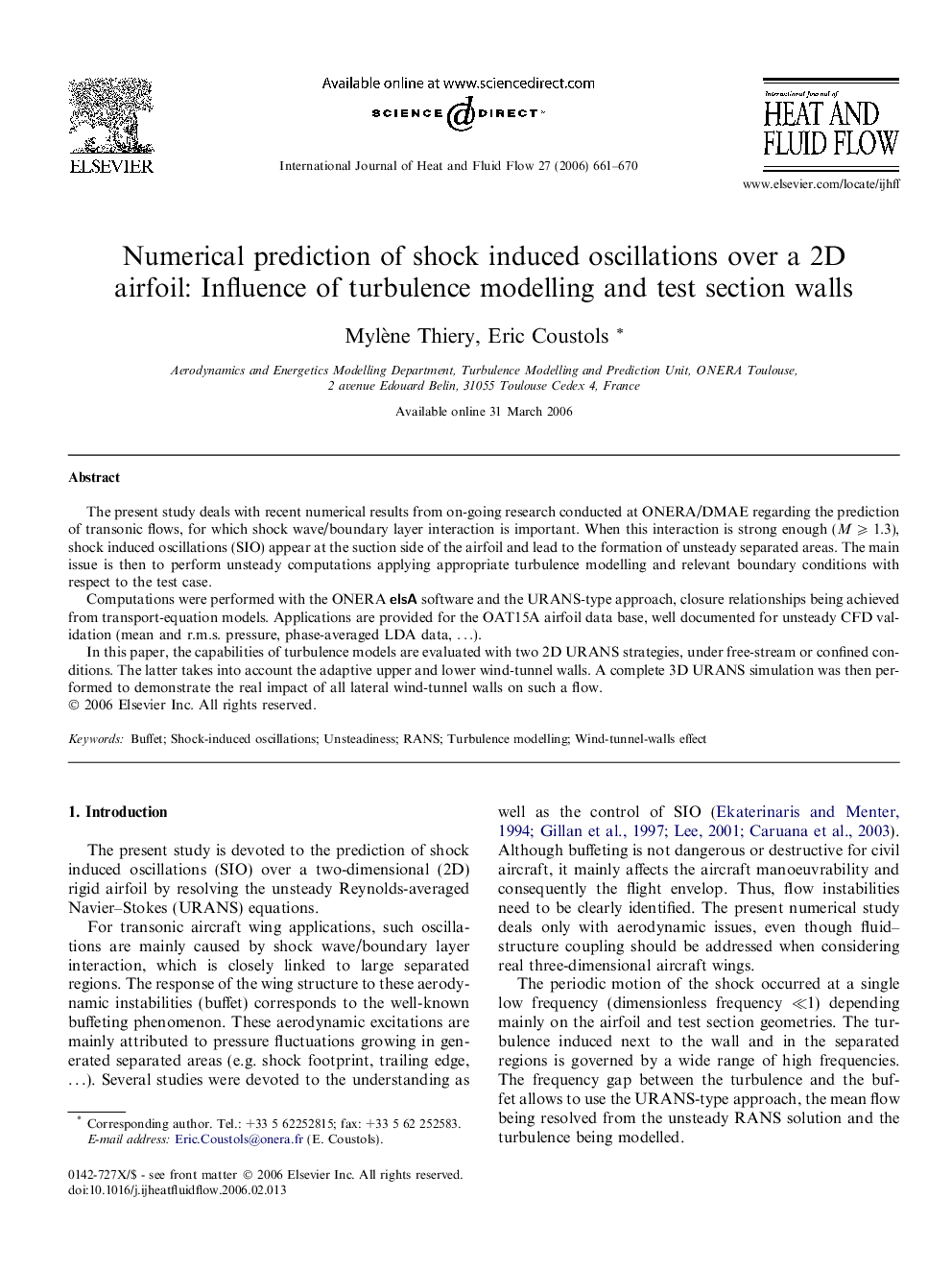| Article ID | Journal | Published Year | Pages | File Type |
|---|---|---|---|---|
| 656293 | International Journal of Heat and Fluid Flow | 2006 | 10 Pages |
The present study deals with recent numerical results from on-going research conducted at ONERA/DMAE regarding the prediction of transonic flows, for which shock wave/boundary layer interaction is important. When this interaction is strong enough (M ⩾ 1.3), shock induced oscillations (SIO) appear at the suction side of the airfoil and lead to the formation of unsteady separated areas. The main issue is then to perform unsteady computations applying appropriate turbulence modelling and relevant boundary conditions with respect to the test case.Computations were performed with the ONERA elsA software and the URANS-type approach, closure relationships being achieved from transport-equation models. Applications are provided for the OAT15A airfoil data base, well documented for unsteady CFD validation (mean and r.m.s. pressure, phase-averaged LDA data, …).In this paper, the capabilities of turbulence models are evaluated with two 2D URANS strategies, under free-stream or confined conditions. The latter takes into account the adaptive upper and lower wind-tunnel walls. A complete 3D URANS simulation was then performed to demonstrate the real impact of all lateral wind-tunnel walls on such a flow.
